This article brings you an introduction to the usage of Map in ES6 (code examples). It has certain reference value. Friends in need can refer to it. I hope it will be helpful to you.
Overview
Map is also a new data structure. It is actually often used in js. For example, in the chestnut below, we often use an object like this. Rather than saying that it is an object, it is actually More like a Map, but compared to a real Map, this is still a bit weak,
let color={
"red":"#FF0000",
"green":"#00FF00",
"blue":"#0000FFF"
}
color['red']
Initialization
new Map([iterable])
Initializing a Map has an optional parameter, which must be an iterable Objects, iterable objects include String, Array, Array-Like obejct (Arguments, NodeList), Typed Array, Set, Map and user-defined iterable objects.
Array
new Map([[1,2],[3,4]]) // Map(2) {1 => 2, 3 => 4}
Add
Compared with the object as Map, the key of Map can be any value, even NaN
var myMap = new Map();
var keyObj = {},
keyFunc = function () {},
keyString = "a string";
// 添加键
myMap.set(keyString, "和键'a string'关联的值");
myMap.set(keyObj, "和键keyObj关联的值");
myMap.set(keyFunc, "和键keyFunc关联的值");
Get## The size of #MapmyMap.size // 3
GetmyMap.get(keyString) // "和键'a string'关联的值"
myMap.get(keyObj) // "和键keyObj关联的值"
myMap.get(keyFunc) // "和键keyFunc关联的值"
Whether it containsmyMap.has(keyString) // true
myMap.has('1') // false
DeletemyMap.delete(keyString) // true
myMap.delete('') // false
TraversemyMap.forEach(m=>{console.log(m)})
// 和键'a string'关联的值
// 和键keyObj关联的值
// 和键keyFunc关联的值
Get the iterator let entries=myMap.entries()
entries.next().value // 和键'a string'关联的值
entries.next().value// 和键keyObj关联的值
entries.next().value// 和键keyFunc关联的值
Get key iteratorlet keys=myMap.keys()
keys.next().value // "a string"
keys.next().value// function () {}
keys.next().value// {}
Get value iteratorlet values=myMap.values()
values.next().value // 和键'a string'关联的值
values.next().value// 和键keyObj关联的值
values.next().value// 和键keyFunc关联的值
ClearmySet.clear()
The above is the detailed content of Introduction to the usage of Map in ES6 (code example). For more information, please follow other related articles on the PHP Chinese website!
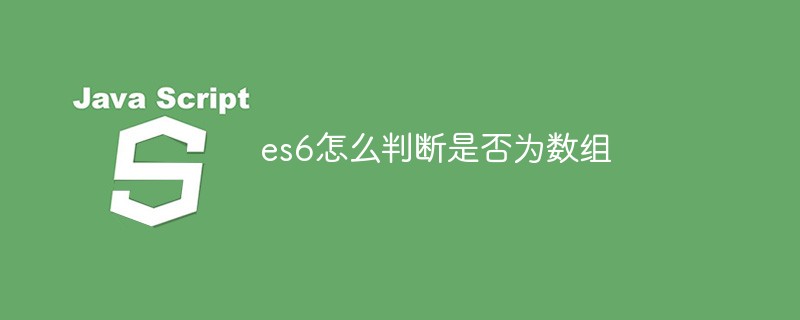 es6怎么判断是否为数组Apr 25, 2022 pm 06:43 PM
es6怎么判断是否为数组Apr 25, 2022 pm 06:43 PM在es6中,可以利用“Array.isArray()”方法判断对象是否为数组,若判断的对象是数组,返回的结果是true,若判断对象不是数组,返回的结果是false,语法为“Array.isArray(需要检测的js对象)”。
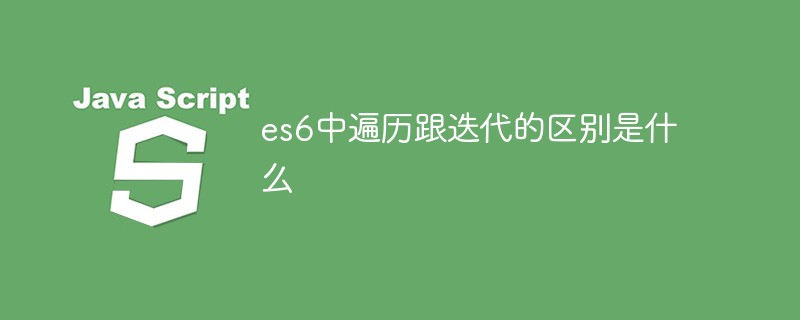 es6中遍历跟迭代的区别是什么Apr 26, 2022 pm 02:57 PM
es6中遍历跟迭代的区别是什么Apr 26, 2022 pm 02:57 PMes6中遍历跟迭代的区别是:遍历强调的是要把整个数据依次全部取出来,是访问数据结构的所有元素;而迭代虽然也是依次取出数据,但是并不保证取多少,也不保证把所有的数据取完,是遍历的一种形式。
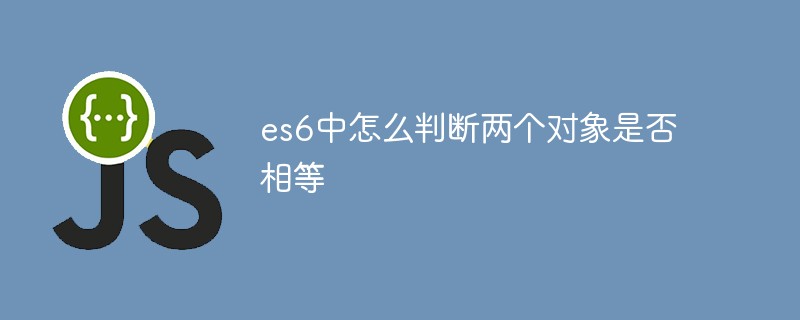 es6中怎么判断两个对象是否相等Apr 19, 2022 pm 03:34 PM
es6中怎么判断两个对象是否相等Apr 19, 2022 pm 03:34 PM在es6中,可用Object对象的is()方法来判断两个对象是否相等,该方法检测两个变量的值是否为同一个值,判断两个对象的引用地址是否一致,语法“Object.is(对象1,对象2)”;该方法会返回布尔值,若返回true则表示两个对象相等。
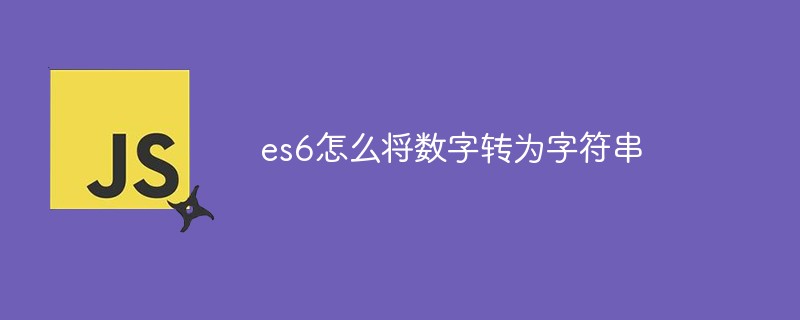 es6怎么将数字转为字符串Apr 19, 2022 pm 06:38 PM
es6怎么将数字转为字符串Apr 19, 2022 pm 06:38 PM转换方法:1、利用“+”给数字拼接一个空字符,语法“数字+""”;2、使用String(),可把对象的值转换为字符串,语法“String(数字对象)”;3、用toString(),可返回数字的字符串表示,语法“数字.toString()”。
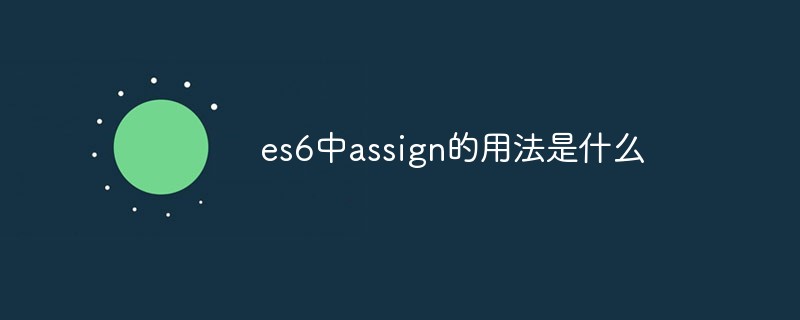 es6中assign的用法是什么May 05, 2022 pm 02:25 PM
es6中assign的用法是什么May 05, 2022 pm 02:25 PM在es6中,assign用于对象的合并,可以将源对象的所有可枚举属性复制到目标对象;若目标对象与源对象有同名属性,或多个源对象有同名属性,则后面的属性会覆盖前面的属性,语法为“Object.assign(...)”
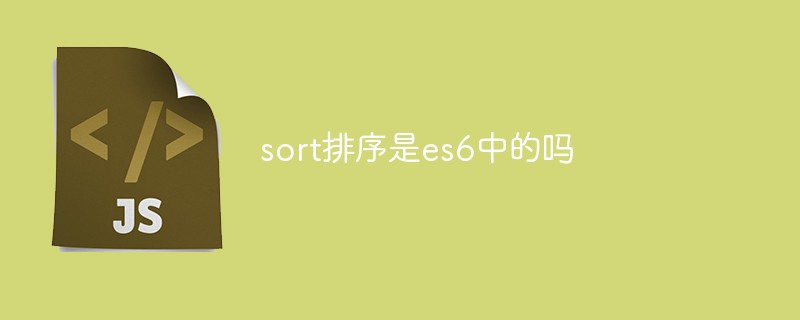 sort排序是es6中的吗Apr 25, 2022 pm 03:30 PM
sort排序是es6中的吗Apr 25, 2022 pm 03:30 PMsort排序是es6中的;sort排序是es6中用于对数组的元素进行排序的方法,该方法默认不传参,按照字符编码顺序进行排序,排序顺序可以是字母或数字,并按升序或降序,语法为“array.sort(callback(a,b))”。
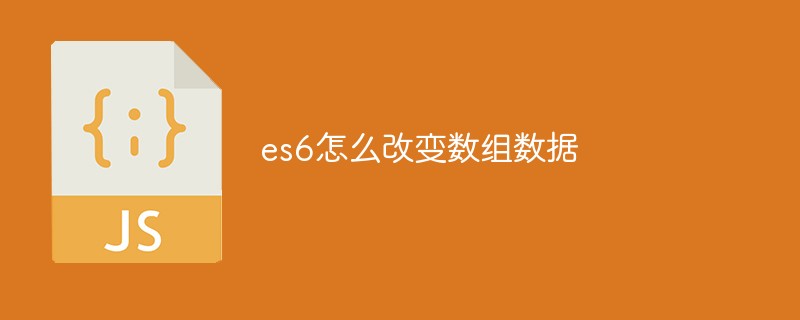 es6怎么改变数组数据Apr 26, 2022 am 10:08 AM
es6怎么改变数组数据Apr 26, 2022 am 10:08 AM改变方法:1、利用splice()方法修改,该方法可以直接修改原数组的内容,语法为“数组.splice(开始位置,修改个数,修改后的值)”;2、利用下标访问数组元素,并重新赋值来修改数组数据,语法为“数组[下标值]=修改后的值;”。
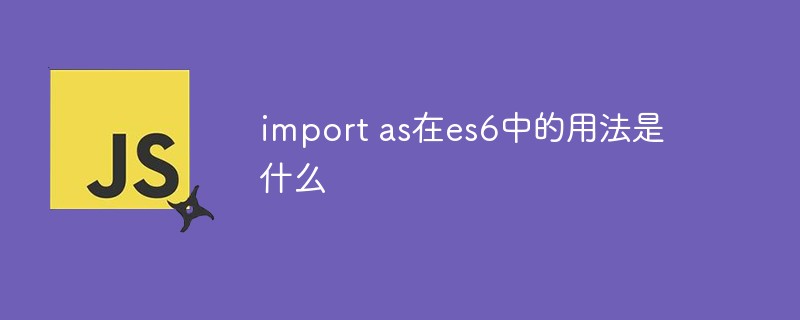 import as在es6中的用法是什么Apr 25, 2022 pm 05:19 PM
import as在es6中的用法是什么Apr 25, 2022 pm 05:19 PM在es6中,import as用于将若干export导出的内容组合成一个对象返回;ES6的模块化分为导出与导入两个模块,该方法能够将所有的导出内容包裹到指定对象中,语法为“import * as 对象 from ...”。


Hot AI Tools

Undresser.AI Undress
AI-powered app for creating realistic nude photos

AI Clothes Remover
Online AI tool for removing clothes from photos.

Undress AI Tool
Undress images for free

Clothoff.io
AI clothes remover

AI Hentai Generator
Generate AI Hentai for free.

Hot Article

Hot Tools

SublimeText3 Mac version
God-level code editing software (SublimeText3)

MantisBT
Mantis is an easy-to-deploy web-based defect tracking tool designed to aid in product defect tracking. It requires PHP, MySQL and a web server. Check out our demo and hosting services.

MinGW - Minimalist GNU for Windows
This project is in the process of being migrated to osdn.net/projects/mingw, you can continue to follow us there. MinGW: A native Windows port of the GNU Compiler Collection (GCC), freely distributable import libraries and header files for building native Windows applications; includes extensions to the MSVC runtime to support C99 functionality. All MinGW software can run on 64-bit Windows platforms.

WebStorm Mac version
Useful JavaScript development tools

Safe Exam Browser
Safe Exam Browser is a secure browser environment for taking online exams securely. This software turns any computer into a secure workstation. It controls access to any utility and prevents students from using unauthorized resources.







